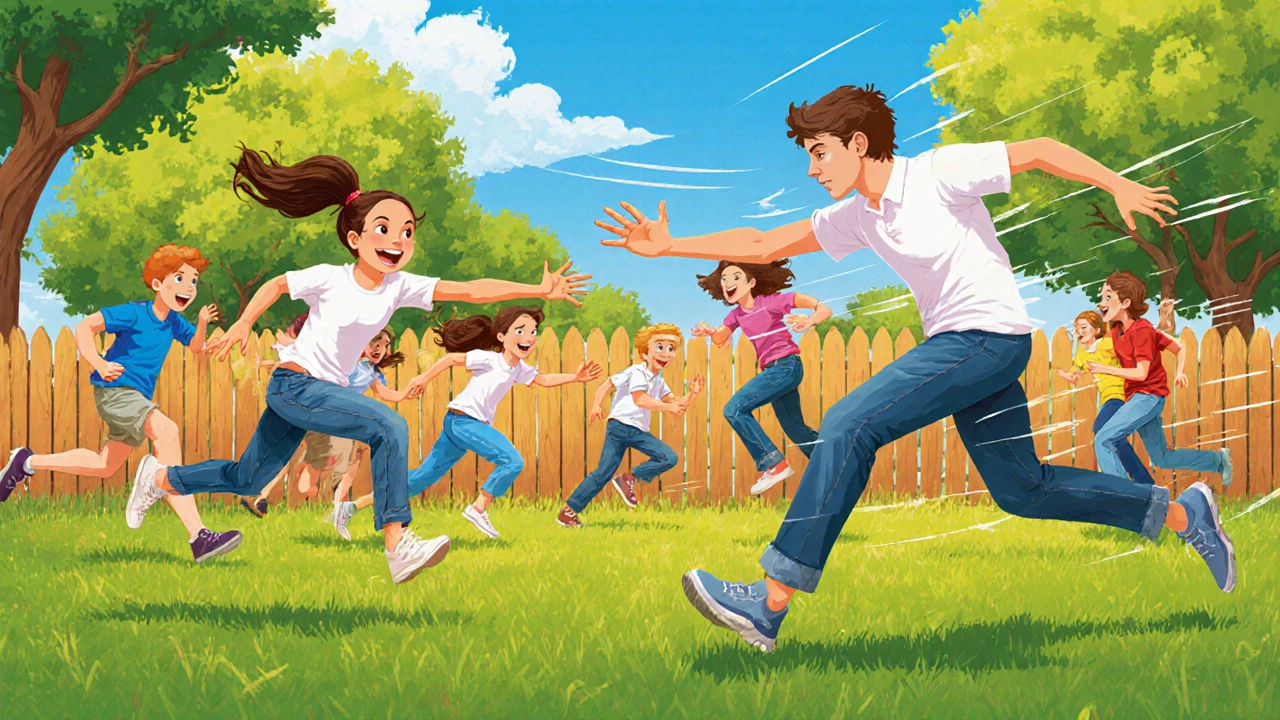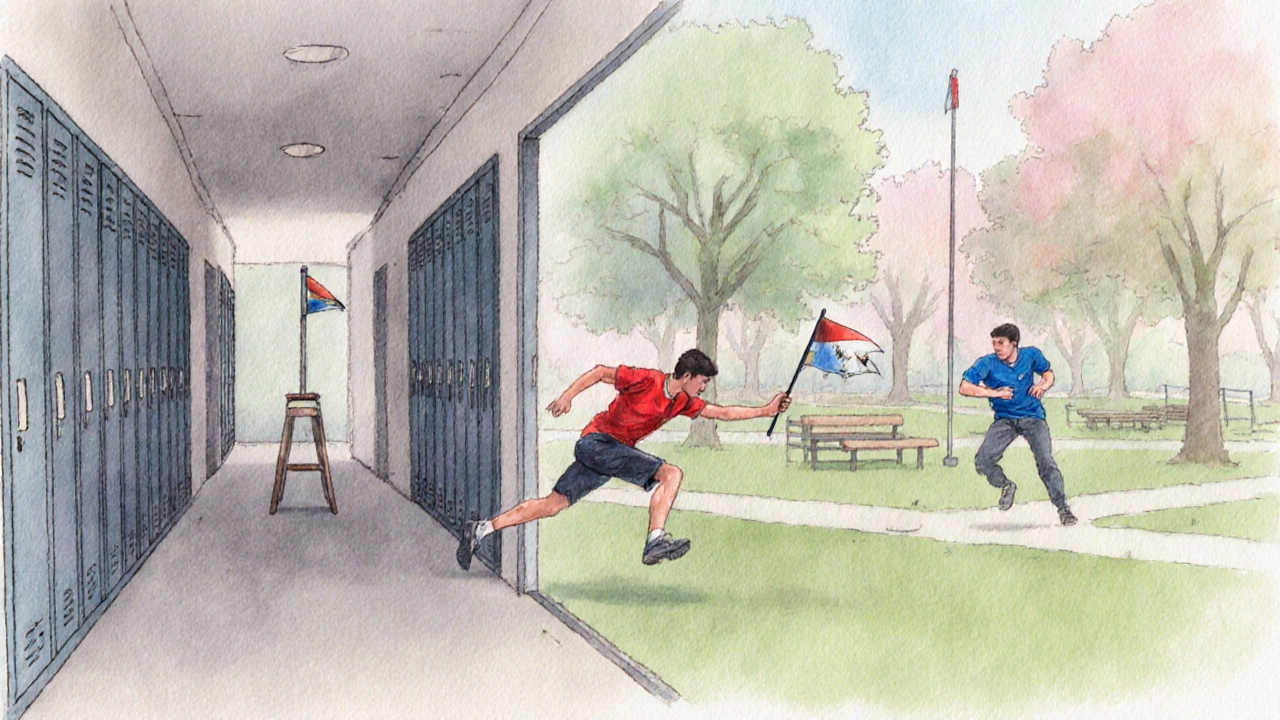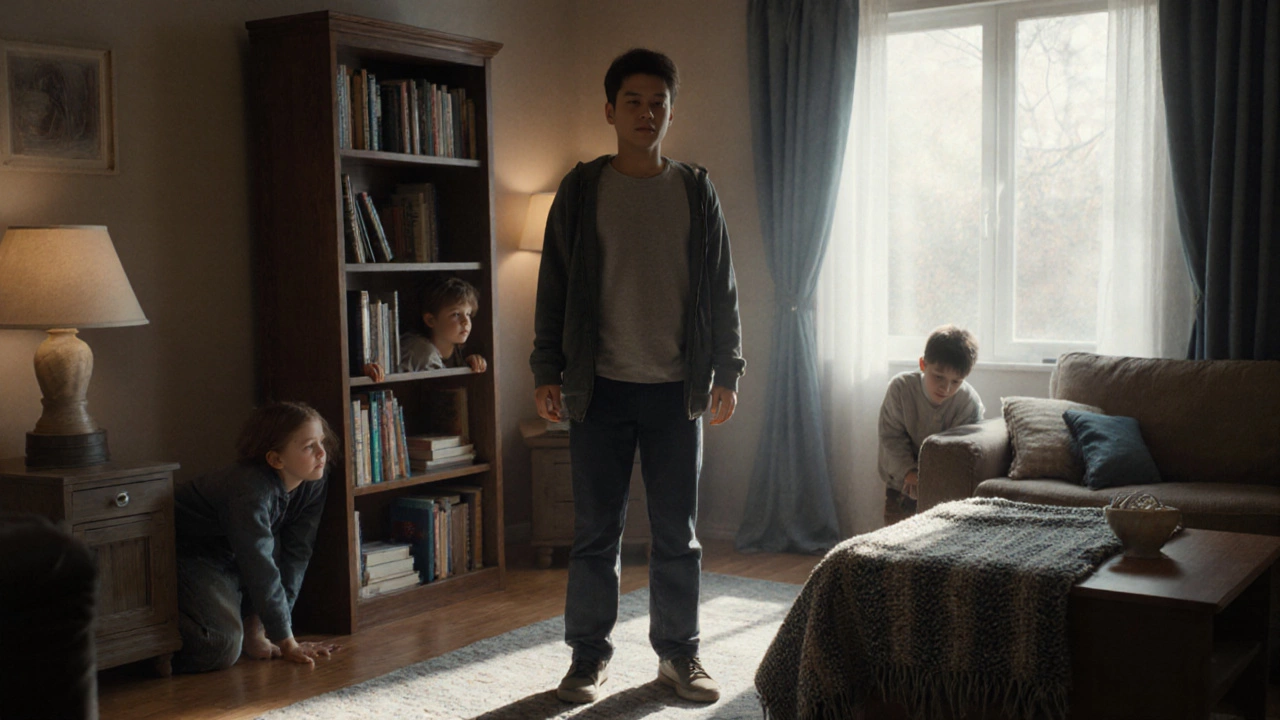When you hear the term Indoor and Outdoor Games is a category of activities that can be enjoyed inside a building or out in the open, requiring minimal equipment and adaptable to various ages, the mind jumps to childhood playgrounds, family gatherings, and school recess. Whether you’re stuck inside on a rainy day in Wellington or looking for a quick backyard romp, the right game can turn any space into a hub of laughter and movement. Below is a practical guide to five games that work just as well indoors as they do outdoors, plus tips for tailoring each to your group’s size, space, and energy level.
Why Simple Games Still Matter
Modern life throws a lot of screens and schedules at us, yet the simplest games remain powerful tools for physical health, social bonding, and creative problem‑solving. A quick round of Tag encourages sprinting, quick direction changes, and heart‑pumping cardio without any fancy gear. Hide and Seek sharpens spatial awareness, teamwork, and the joy of discovery. Both can be scaled down for a living‑room or expanded to a field, making them perfect for families, schools, or community events.
1. Hide and Seek - The Ultimate Space‑Shifter
Hide and Seek needs only two players: one seeker and a group of hide‑ers. The seeker counts while everyone else finds a spot out of sight. The game ends when the seeker tags the last hidden player or a time limit expires.
- Indoor tweaks: Use furniture, curtains, and closets. Dim the lights for extra suspense.
- Outdoor tweaks: Trees, garden sheds, or park benches become perfect hiding spots.
- Safety tip: Set clear boundaries so no one wanders too far.
Because the core rule is simply “don’t be seen,” the game translates instantly from a cramped hallway to an open field.
2. Tag - Fast‑Paced Tag‑Team Fun
Tag starts with one person as ‘it.’ The goal is to touch another player, who then becomes the new ‘it.’ Variations like freeze‑tag or flashlight‑tag add layers of strategy.
- Indoor version: Short corridors, a gymnasium, or a large living‑room keep the action tight.
- Outdoor version: An open lawn or beach offers room for longer sprints and dodges.
- Equipment: None, though a small soft ball can replace the hand‑touch in large groups.
Tag’s simplicity makes it easy to start on the spot, and the constant motion boosts cardiovascular health for kids and adults alike.
3. Frisbee - Throw, Catch, and Create
Frisbee (or a simple flying disc) is a versatile flying toy that can be used for casual tosses or structured games like Ultimate. The basic skill set-throw, catch, and aim-works in any open space.
- Indoor tip: Use a lightweight plastic disc and keep throws low to avoid breaking objects.
- Outdoor tip: Take advantage of wind for longer flights; a park or beach is ideal.
- Safety note: Clear fragile items and set a “no‑head‑hit” rule for younger kids.
Even a single round of “keep‑away” gives a solid arm workout, while a full Ultimate match builds teamwork and strategic thinking.

4. Dodgeball - Team Dynamics in a Burst
Dodgeball pits two teams against each other, aiming to hit opponents with soft balls while avoiding being hit themselves. The game can be shortened to quick rounds, making it perfect for school PE or backyard fun.
- Indoor adaptation: Use a gym or cleared hall; soften balls with foam.
- Outdoor adaptation: Open lawns or sand pits give extra room for dodging.
- Equipment: 6-8 soft rubber or foam balls, a marker for the “center line.”
Beyond the high‑energy excitement, dodgeball teaches quick reflexes and spatial judgment, which are valuable in everyday movement.
5. Capture the Flag - Strategy Meets Speed
Capture the Flag divides players into two teams, each protecting a flag (or any small object). The objective is to infiltrate the opponent’s side, grab the flag, and return it safely to your base.
- Indoor setup: Use hallways or a large room with clear “home bases.”
- Outdoor setup: A park with trees and benches creates natural obstacles.
- Key rule: No tackling; players tag “out” or send opponents back to start.
This game blends sprinting, stealth, and teamwork, making it a favorite for school field days and family reunions alike.
Indoor vs Outdoor Game Characteristics
| Aspect | Indoor Friendly | Outdoor Friendly |
|---|---|---|
| Space Needed | 10‑20 m² (living room, hallway) | 50‑200 m² (garden, park, beach) |
| Equipment | Minimal - often none | Often a ball or disc, optional cones |
| Number of Players | 3‑10 comfortable | 10‑30 or more |
| Weather Impact | None (climate‑controlled) | Needs dry surface, shade for hot days |
| Safety Concerns | Furniture breakage, low ceilings | Sun exposure, uneven terrain |

Quick Checklist for Running a Game Session
- Define the play area and mark boundaries with tape or cones.
- Gather any required equipment (disc, soft balls, small flags).
- Explain the basic rules and safety rules (no pushing, respect boundaries).
- Do a short warm‑up: light jogging or stretching.
- Start the game, keep an eye on energy levels, and pause for water breaks.
- Wrap up with a cool‑down stretch and a quick debrief - what was fun, what could improve?
Following this flow makes the experience smooth whether you’re in a Wellington apartment or a regional park.
Adaptations for Different Ages
Kids under 7 benefit from simplified rules and smaller spaces. For teens and adults, add strategy layers like “safe zones” in Capture the Flag or “two‑ball” variations in Dodgeball. Seniors can enjoy low‑impact versions, such as sliding “catch” in Frisbee or a slower‑paced Hide and Seek using designated rooms.
Tips for Keeping Games Fresh
- Rotate roles: let the previous “it” become a team captain in Tag.
- Introduce themes (pirate treasure hunt for Capture the Flag).
- Use music or timers to create rhythm and urgency.
- Mix indoor and outdoor sessions in a single day for variety.
These small twists prevent boredom and encourage participants to stay engaged over several weeks.
FAQs
Can these games be played with limited space?
Absolutely. Hide and Seek, Tag, and even a gentle Frisbee toss work well in hallways, basements, or small living rooms. Just adjust boundaries and keep throws low.
What safety gear is needed?
For most of these games you only need a soft surface (carpet or grass) and clear the area of breakables. If you use balls, opt for foam or rubber to avoid injuries.
How many players are ideal?
A minimum of three works, but five to ten creates more excitement. Larger groups (15‑20) shine in Capture the Flag or Dodgeball.
Can I adapt these games for adults?
Yes - add competitive scoring, time limits, or strategic elements. For example, use a ‘safe zone’ in Tag or incorporate a point system in Frisbee.
What if the weather changes suddenly?
Keep a backup indoor game (like Hide and Seek) ready. A portable canopy or large tent can also transition an outdoor game indoors quickly.
These five indoor outdoor games prove that you don’t need fancy gear or a huge field to have a blast. Pick one, set the space, and let the fun roll - whether you’re stuck inside by rain or basking in the Wellington sunshine.





